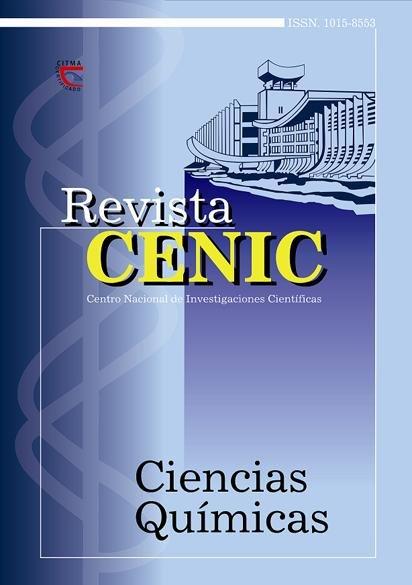Replacement of position A in the structure Perovskite ABO3
Abstract
The aim of this work was to study the possible influence of the bismuth introduction as dopant in ABO3 Perovskite structure, through a comparison of the results obtained with similar ceramics dopanted with lanthanum and using new densitying analytical proceedings during the sintering process. In the present work the system Pb1-3x/2Dpx(Zr0.54Ti0.46)O3 was studied, and Dp was the dopant used (lanthanum and bismuth in this case) at concentrations of 0.6, 0.8 and 1.0 %wt. The study is based upon a comparative analysis of dopants influence on sintering, a very important process on the obtention of piezoelectric ceramics. It was performed by determining the following parameters: relative density (r/rT), sintering rate (e·r) and volumetric shrinkage (q) (contractions related to the green compact). Conventional methods were used for obtaining ceramics starting from carbonates and oxides metallic (La2O3, Bi2O5, PbCO3, ZrO2, TiO2). Different sintering was carried out at 1 523 K for La and 1 423, 1 473 and 1 523K for Bi during 30, 100 and 300 min in both cases. X-Ray Diffraction techniques were used to validate the resultant crystallographic structure. The behavior of e·r and q for La resulted as expected; optimum conditions were reached for Tsinter. = 1 523 K during 100 min for 1 %(wt) resulting in a r/rT = 92 %. However, in the Bi case, even when sintering temperature was as low as 1 473 K, only a poor r/rT = 86 % is reached and the rest of the parameters did not show the expected behavior.

Downloads
Published
How to Cite
Issue
Section
License
Copyright (c) 2001 Copyright (c) 2001 Revista CENIC Ciencias Químicas

This work is licensed under a Creative Commons Attribution-NonCommercial-ShareAlike 4.0 International License.
Los autores que publican en esta revista están de acuerdo con los siguientes términos:
Los autores conservan los derechos de autor y garantizan a la revista el derecho de ser la primera publicación del trabajo al igual que licenciado bajo una Creative Commons Atribución-NoComercial-CompartirIgual 4.0 que permite a otros compartir el trabajo con un reconocimiento de la autoría del trabajo y la publicación inicial en esta revista.
Los autores pueden establecer por separado acuerdos adicionales para la distribución no exclusiva de la versión de la obra publicada en la revista (por ejemplo, situarlo en un repositorio institucional o publicarlo en un libro), con un reconocimiento de su publicación inicial en esta revista.
Se permite y se anima a los autores a difundir sus trabajos electrónicamente (por ejemplo, en repositorios institucionales o en su propio sitio web) antes y durante el proceso de envío, ya que puede dar lugar a intercambios productivos, así como a una citación más temprana y mayor de los trabajos publicados (Véase The Effect of Open Access) (en inglés).













